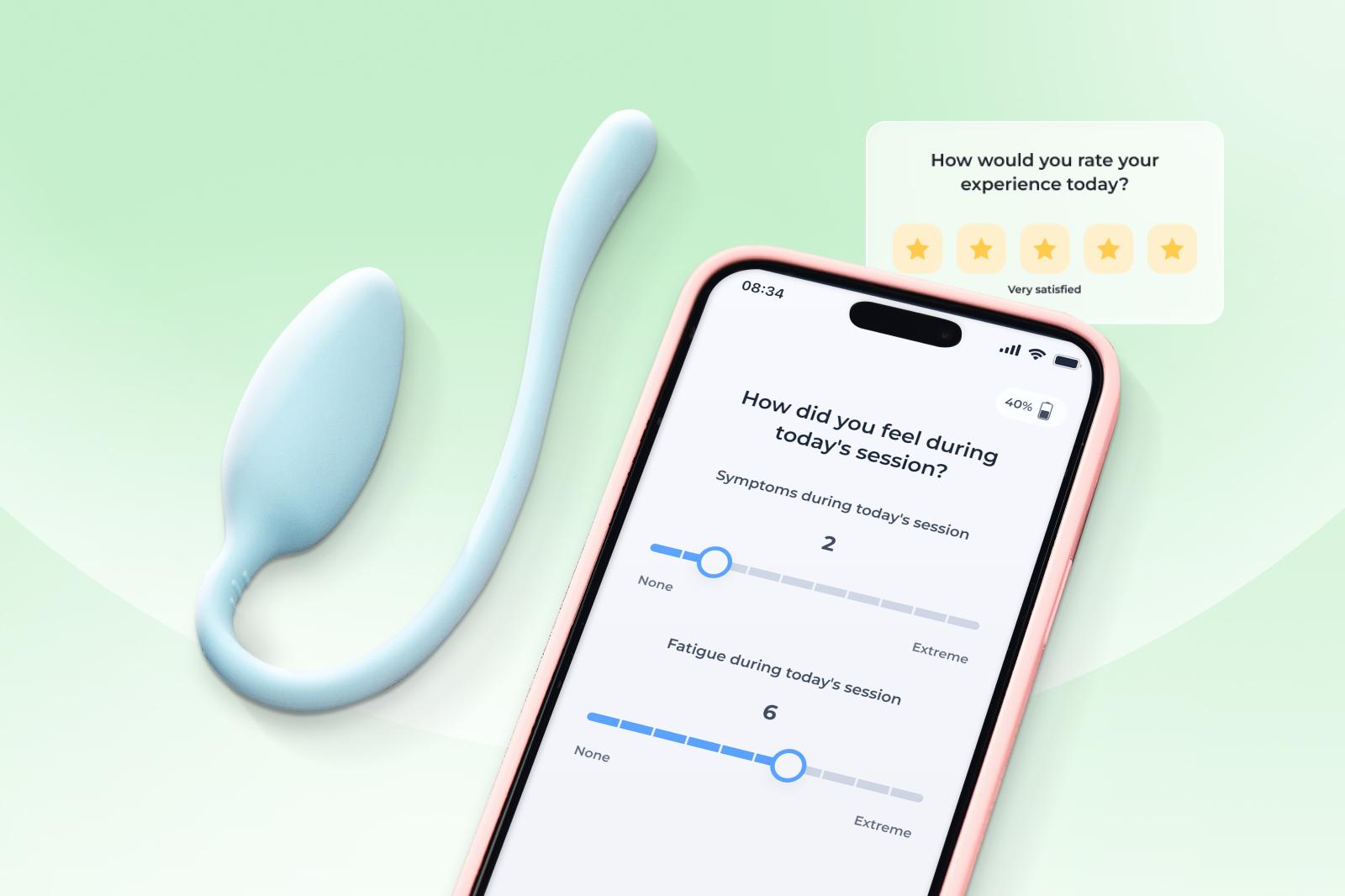Latest articles
Fresh healthcare insights

Productivity study
According to newly published research in the Journal of Occupational and Environmental Medicine, Sword saves clients an average of $2,916 per member per year (PMPY) in lost productivity due to musculoskeletal (MSK) pain. This comes on the heels of an independent analysis conducted by Risk Strategies Consulting, a leading actuarial and risk management consulting firm, that found that Sword saves clients $3,177 PMPY on average by reducing avoidable spending across multiple service categories—including procedures, surgeries, ER visits, office visits, therapy, and medical imaging. Between improving employee productivity and reducing wasteful healthcare spending, Sword drives substantial savings. Keep reading to learn more about the toll MSK-related productivity loss takes on employers, and about the new clinical study which demonstrates the value of Sword’s AI Care platform to improve employee productivity and quality of life.
June 25, 2024 • 6 min read

RSC study
Study finds that participants in the Sword Health program achieve $3,177 gross savings annually per member—the highest across the healthtech industry.² New York, June 25, 2024—A new study by Risk Strategies Consulting (RSC), a leader in actuarial and risk management consulting, has confirmed that participants in the Sword Health program save $3,177 annually on musculoskeletal (MSK) and physical inactivity-related healthcare expenses compared to non-participants.³ These savings are primarily due to a 50% reduction in MSK surgeries and lower utilization of therapy, office visits, imaging, and emergency room services.⁴ The overall medical cost savings translate to a 3.2x return on investment (ROI), marking the highest independently validated medical savings in the health tech market based on Sword Health's analysis.⁵ Supporting these findings, the Peterson Health Technology Institute published a report indicating that digital MSK solutions like Sword Health provide clinically meaningful improvements in pain and function that are comparable to in-person therapy, with significant potential to reduce overall healthcare spending.⁶
June 25, 2024 • 3 min read

Meet Phoenix, the world's first AI care specialist
Phoenix is the next evolution of Sword's AI Care platform, combining AI and human clinicians to make world-class care infinitely more accessible, scalable, and cost-effective New York, June 4, 2024 – Sword Health, the pioneer of AI Care, artificial intelligence powering the delivery of care, announced today a financing round of $130 million in a mix of primary and secondary sale to provide liquidity to current and former employees and early investors. This brings the total funding to $340 million to date, and the company is now valued at $3 billion—up 50% from its Series D valuation. Sword Health also introduced Phoenix, the AI Care Specialist, that guides and reacts to members during their sessions through natural conversation, bringing the clinical experience and expertise of a clinician to wherever the patient is. Phoenix, named for its ability to get members back to living vibrant lives, will be integrated across the Sword platform, starting with Thrive, its solution for physical pain, and then into Bloom, its women’s pelvic health care solution, in the coming months.
June 4, 2024 • 4 min read

The Power of Mindful Walking
Walking has been described as a practically perfect exercise. It’s convenient, low-cost, low-risk, and provides significant benefits to your physical health, including: But it can also be transformative for your mental health, resulting in: Physical activity, such as walking, is associated with improvements in mood and reduced risk of depression and anxiety. In fact, some evidence shows moderate intensity exercise has a greater effect on mood compared to a vigorous effort. So even a stroll at a comfortable pace is beneficial. Keep reading to learn how to maximize these mental health benefits with mindfulness.
May 23, 2024 • 3 min read

Ask a PT: 6 things to know before you take up running
Running is one of the most popular forms of exercise worldwide. About 50 million Americans, or 15% of the U.S. population, participated in some form of running or jogging in 2023. A widely accessible sport, running doesn’t require any fancy equipment, a gym membership, a coach, or a team. All you need to get started is yourself and a pair of training shoes (more on choosing the right shoes later)—and running is easily adaptable to any person’s pace and fitness level. The fact that running is so approachable is excellent news, because research shows that it has significant physical and mental benefits. Even going on a few one- to two-mile runs each week is enough to improve your cardiovascular health, lower your risk of depression, and reduce your mortality risk.
May 10, 2024 • 10 min read

What Freedom From Pain Makes Possible: Meet Sword Member Chandra
Sword member Chandra first experienced pain while growing up in Los Angeles, California. “It started in my teenage years, playing sports and not really having access or the knowledge to know how to take care of myself after.” Throughout her twenties and beyond, Chandra’s pain lingered, even as she took up weight training and powerlifting. Despite how much she enjoyed lifting, pain in her left shoulder and bicep limited what she was able to accomplish in the gym.
March 5, 2024 • 4 min read

Unlocking Pelvic Wellness: 5 Habits for Optimal Pelvic Health
In the fast-paced rhythm of our lives, your wellbeing often takes a back seat. However, when it comes to pelvic health, adopting simple habits can make a world of a difference. Let’s explore five habits that can help unlock a healthier, more balanced you. If you find yourself straining or rushing when using the toilet, it’s time to change your bathroom habits. In order for the bladder and bowel to completely empty, your pelvic floor muscles must relax. Set yourself up for success by sitting all the way down (not squatting), tilting your torso slightly forward and taking a deep breath to help relax your muscles. Always avoid straining or pushing down, as this puts pressure on your pelvic floor muscles and can contribute to dysfunction like pelvic organ prolapse and overactive bladder. Water is not just essential for overall health, but it also plays a crucial role in your pelvic wellness. Staying hydrated supports the proper functioning of your urinary system. When hydrating, make sure to avoid excess caffeine, alcohol and artificial sweeteners, as these are bladder irritants that can increase the frequency of bathroom breaks and contribute to bladder urgency issues.
January 30, 2024 • 5 min read

Sword Health triples revenue and delivers 1.5M AI care sessions in 2023
New York & San Francisco, January 8, 2024 — At the J.P. Morgan Healthcare Conference in San Francisco today, Sword Health CEO and founder, Virgilio Bento, announced that the company has delivered 1.5 million AI Care sessions in 2023, bringing its cumulative total to 2.5 million since its launch in 2020, confirming its status as the largest provider of care through artificial intelligence. As the world’s first platform to predict, prevent, and treat pain, the company has pioneered the partnership between clinicians and AI, working side by side, Sword is able to make care delivery infinitely more convenient, accessible, and scalable. Sword experienced unparalleled growth in 2023. Building on the previous years’ hyper growth, the company launched three new products and nearly tripled its revenue over last year. In 2023, Sword members completed over 15 million minutes of AI therapy, with 64% of members becoming low risk for surgery by the end of their program and saving their clients $129 million in unnecessary healthcare costs. “Six years ago we invented and patented the world's first AI care solution — the AI Clinician that revolutionized how we treat pain, for which we now hold multiple patents. Since then, we've grown it into a full platform, with seven distinct products, and the largest provider of actual delivery of care by AI,” said Bento. “While many healthcare companies utilize AI for diagnostics and/or back office use cases, Sword is the only company using AI to deliver high-quality care at a global scale.”
January 9, 2024 • 3 min read

Rethink Your Pain: How to Reduce Pain by Improving the Brain-Body Connection
Imagine for a minute that pain isn't something that happens TO you, but instead, it's more like a conversation that happens between your brain and your body. Now imagine you had the skills to improve that conversation from an angry shouting match to a more respectful discussion. By the end of this article, that's exactly where you'll be. Using Pain Neuroscience Education as an approach to pain management shifts the focus from solely treating pain symptoms to using knowledge about how pain works. You’ll be empowered to take an active role in your pain management. By better understanding your body’s response to pain, you can minimize your experience of pain over the long term.
December 20, 2023 • 11 min read

With Atlas, Companies Can Fight Pain and Promote Health Equity Across Global Teams
Pain is a global crisis—2 billion people suffer from pain, making it the world’s foremost epidemic. At Sword Health, we believe that a global crisis deserves a global solution. So we created Atlas, the first pain-fighting solution that’s accessible around the world. Atlas, the world’s first global pain-fighting solution
November 30, 2023 • 7 min read

Painless Pickleball: Preventing and Treating Common Pickleball Injuries
Pickleball is the fastest-growing sport in the U.S. In fact, 48.3 million Americans, or 19% of the adult population, have played at least one game of pickleball in the last year. Its surge in popularity is partly due to people realizing how easy it is to get into. The rules of the game are relatively simple, and it doesn’t require much special training or equipment. This makes it appealing to people of all ages and fitness levels who are looking for a way to get some exercise and make some new friends. As more and more people take up pickleball, it’s important to spread the word about pickleball safety.
November 1, 2023 • 9 min read

Ask a PT: What Is Causing My Shoulder Pain?
When your shoulder hurts, it can be difficult to tell exactly what’s gone wrong. You’ve probably heard of pinched nerves and rotator cuff tears. Perhaps you’ve also heard about shoulders being ‘impinged’ or ‘frozen.’ It’s not easy to keep these various shoulder conditions straight, especially when they all cause similar pain symptoms. The first step towards fixing a problem is identifying it. This article, written by a team of Doctors of Physical Therapy, is designed to help you figure out what’s causing your shoulder pain — so you can begin the process of healing it. We will dive into the five most common causes of shoulder pain and how to differentiate them. Cervical refers to the neck, and radiculopathy is pain that radiates to another body part. Hence, cervical radiculopathy: a pinched nerve in the neck, which can cause radiating pain affecting the shoulder. It occurs when the cervical spine becomes damaged due to sudden injury or degeneration over time, and squeezes or puts pressure on a nearby nerve.
November 1, 2023 • 6 min read
For employers
Workplace health advice
How Digital Physical Therapy Improves Employee Retention
Did you know that fear of pain can be more disabling than pain itself? Chronic pain and employee turnover prevention are critically linked, but with the right MSK benefits coverage, employers can help their team members recover from pain to increase workplace productivity. Nearly 28% of people in the workplace will take leave for MSK pain over the course of a year. Patients who suffer the two most common conditions of low back and neck pain have an average return to work of 7 days. Overall, MSK conditions are responsible for 44 missed work days each year on average.
October 24, 2025 • 6 min read
How to evaluate and select the best digital MSK vendors
Musculoskeletal (MSK) disorders are one of the most expensive and under-addressed cost centers facing U.S. healthcare providers. MSK disorders affect 1 in 2 Americans and cost over $190 billion per year, more than heart disease, cancer, or mental health conditions. For employers and health plans, MSK claims are often among the top 3 cost drivers. And for members, chronic pain reduces quality of life, drives absenteeism, and often leads to costly downstream interventions. That’s why digital MSK solutions have surged in popularity. The promise is compelling: better access, which drives stronger engagement, delivers better outcomes, and therefore lowers overall healthcare costs.
October 24, 2025 • 6 min read
Reduce MSK costs with more effective digital MSK care plans
You’ve likely seen numerous digital health solutions that promise to lower medical spend. You’ve probably zeroed in on the top conditions with significant digital solutions in the marketplace: musculoskeletal (MSK), mental health, and diabetes. For most companies, prioritizing MSK care over other digital health solutions will drive the biggest benefits for your employees and your bottom line when it comes to savings. Given the multitude of vendors, platforms, and solutions available, prioritization can be a daunting task. How do you choose from among the thousands of digital health tools? What combination of condition focus and solution selection will drive the best outcomes for your population and the biggest return for your business?
October 24, 2025 • 5 min read
Tackling the #1 driver of employers’ health costs: MSK
The phrase ‘musculoskeletal disorder’ may not ring a bell — but the feeling might. The term refers to any type of pain in the muscles or joints, from chronic pain to injuries to post-surgical pain. Many of us have suffered from a musculoskeletal (MSK) issue at some point in our lives. In fact, one in two Americans is struggling with an MSK condition right now. And it’s causing economic ripples, especially in the workplace.
January 20, 2020 • 6 min read
Expert guidance
From the experts: Ask a physical therapist

Ask a PT: when is the best time to do my exercises?
Before I joined Sword Health, I worked in brick-and-mortar clinics. I never worked weekends, and rarely worked past 6 pm. My schedule was great...for me. But for my patients, it was a real challenge. Attending a physical therapy appointment might require leaving work early or slipping out at lunch. Even patients with more flexible schedules would sometimes lament about finding childcare or arranging transportation. A thirty-minute appointment could easily take an hour or even 90 minutes once travel was taken into account. When I was in a clinic, the “best” time for a patient to do their exercises was the time that worked for me, not for them. Sword's virtual model gives our members the power to do their exercises when AND where it's most convenient for them. Now that I work remotely for Sword, I’m able to help our members figure out the best time to do their exercises at home. Now, when my members ask me when they should do their exercises, I tell them - the best time is when you’ll actually do them!
February 11, 2021 • 6 min read

Ask a PT: Does walking really help with pain?
If you’ve ever stood on the sidelines of a sporting event, you’ve likely witnessed many falls, trips and tackles. Whether the players are small children or professional athletes, the advice from the coach may have simply been to “walk it off.” While that is not always the best solution after an acute injury, walking can be a really effective way to manage chronic pain. Motion is lotion. Movement increases blood flow, which brings nutrients to our tissues. It also helps those that don’t have blood flow, like cartilage. Cartilage lines our joints, absorbing impact. It’s surrounded by a liquid which provides it with nutrients, flowing in and out of it like a sponge. Exercise, like walking, causes loading that fills and squeezes that sponge, particularly in the joints of our legs and spine.
August 13, 2020 • 5 min read

Ask a PT: What Is Causing My Shoulder Pain?
When your shoulder hurts, it can be difficult to tell exactly what’s gone wrong. You’ve probably heard of pinched nerves and rotator cuff tears. Perhaps you’ve also heard about shoulders being ‘impinged’ or ‘frozen.’ It’s not easy to keep these various shoulder conditions straight, especially when they all cause similar pain symptoms. The first step towards fixing a problem is identifying it. This article, written by a team of Doctors of Physical Therapy, is designed to help you figure out what’s causing your shoulder pain — so you can begin the process of healing it. We will dive into the five most common causes of shoulder pain and how to differentiate them. Cervical refers to the neck, and radiculopathy is pain that radiates to another body part. Hence, cervical radiculopathy: a pinched nerve in the neck, which can cause radiating pain affecting the shoulder. It occurs when the cervical spine becomes damaged due to sudden injury or degeneration over time, and squeezes or puts pressure on a nearby nerve.
November 1, 2023 • 6 min read
Healthcare contributors
Meet Sword's expert authors

Dr. Vijay Yanamadala, MD, MBA, FAANS
Chief Medical Officer at Sword Health

Dr. Fernando Correia, M.D.
SVP Clinical & Regulatory Affairs at Sword Health

Megan Hill, PT, DPT
Director, Clinical Specialists

Morgan Hollis, MS, RDN
Head of Clinical Strategy, Sword Move

Jennesa Atherton
Head of Clinical Affairs, Sword Bloom

Liz Santo
Senior Clinical Program Manager, Sword Bloom ·





